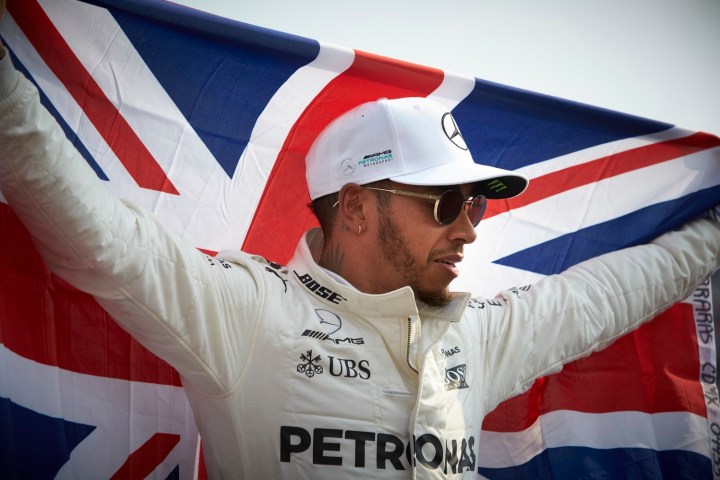
Hamilton joins an elite group of drivers to have won four or more titles. That club includes Juan Manuel Fangio, Alain Prost, Michael Schumacher, and Sebastian Vettel — who happened to be Hamilton’s main rival in this year’s title fight. Vettel led the championship race early in the season, but a series of mishaps that included a crash at the Singapore Grand Prix and a mechanical issue in Japan allowed Hamilton to build up an insurmountable lead.
Vettel took pole position in Mexico, giving him an advantage at the start. But both drivers’ races went off the rails before the first lap was completed. As the pack of cars negotiated turn three, the front wing of Vettel’s Ferrari brushed the right rear tire of Hamilton’s Mercedes, puncturing it. Both drivers were forced to pit, Hamilton for a tire change, and Vettel to have his front wing replaced. That dropped the two title contenders to the back of the field.
Vettel ultimately finished fourth while Hamilton finished ninth, which was enough to clinch the championship. Red Bull Racing’s Max Verstappen actually won the race, followed by Mercedes’ Valtteri Bottas and Ferrari’s Kimi Raikkonen. Clinching a championship with a ninth-place finish was a bit anticlimactic, even for Hamilton.
“Honestly it doesn’t feel real,” Hamilton said after the race. “It was a horrible way to [clinch the title] to be honest, but what could I do?”
Hamilton won his first championship with McLaren in 2008, in only his second season in F1. He next title didn’t come until 2014, after he moved to the Mercedes factory team. The Brit won again in 2015, and was beaten to the title by teammate Nico Rosberg last year.
Mercedes drivers have won every championship since F1’s current hybrid powertrain rules went into effect in 2014, and the automaker has won every constructors’ championship during this period as well. While Vettel wasn’t able to take the title this year, the increased competitiveness of Ferrari and Renault-powered Red Bull Racing made this season’s championship fight a bit more interesting than any of the past three years.
The championship may have been decided, but the 2017 F1 season isn’t over. There are still two races to go, in Brazil and Abu Dhabi. While it’s mathematically impossible for another driver to win the championship at this point, those two race wins are still up for grabs.


